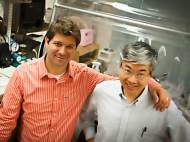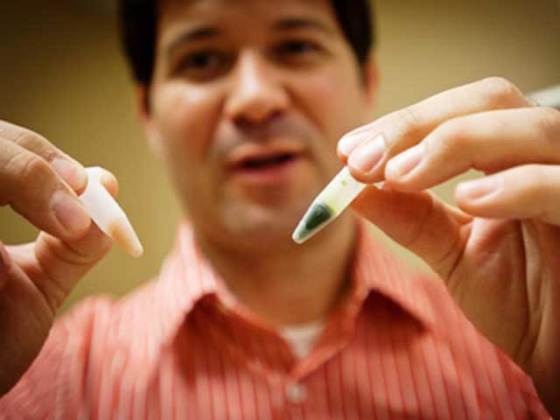Bioengineered algae could be used to produce hydrogen from water
 Many kinds of algae and cyanobacteria are capable to use the energy from sunlight in order to produce compounds needed for their own survival, and during that process they split water molecules and release hydrogen, which holds promise as a clean and carbon-free fuel for the future. A group of researchers found a way to increase hydrogen production with a bioengineered enzyme they developed.
Many kinds of algae and cyanobacteria are capable to use the energy from sunlight in order to produce compounds needed for their own survival, and during that process they split water molecules and release hydrogen, which holds promise as a clean and carbon-free fuel for the future. A group of researchers found a way to increase hydrogen production with a bioengineered enzyme they developed.
One reason this approach hasn’t yet been harnessed for fuel production is that under ordinary circumstances, these organisms produce sugar for their own survival, and the hydrogen is just a byproduct. But Shuguang Zhang, associate director of MIT’s Center for Biomedical Engineering, and postdocs Iftach Yacoby and Sergii Pochekailov, together with colleagues from Tel Aviv University in Israel and the National Renewable Energy Laboratory in Colorado, have found a way to use bioengineered proteins to flip this preference, allowing more hydrogen to be produced.
By using a multitasking enzyme, introduced into the liquid where the algae are at work, both suppresses the sugar production and redirects the organisms’ energies into hydrogen production. According to researchers, adding the bioengineered enzyme increases the rate of algal hydrogen production by about 400 percent, and the sugar production is suppressed but not eliminated. Zhang and Yacoby plan to continue developing the system to increase its efficiency of hydrogen production.
Ultimately, such a system could be used to produce hydrogen on a large scale using water and sunlight. The hydrogen could be used directly to generate electricity in a fuel cell or to power a vehicle, or it could be combined with carbon dioxide to make methane or other fuels in a renewable and carbon-neutral way. This approach could also be used in developing countries, since the algae needed for the process exist everywhere on Earth, and there are no toxic materials involved in any part of the process.
“In the long run, the only viable way to produce renewable energy is to use the sun, [either] to make electricity or in a biochemical reaction to produce hydrogen”, said Yacoby. “I believe there is no one solution, but rather many different approaches depending on the location and the end uses.”
For more information, you can read the article published in the Proceedings of the National Academy of Sciences named: “Photosynthetic electron partitioning between [FeFe]-hydrogenase and ferredoxin:NADP -oxidoreductase (FNR) enzymes in vitro”.










Technologies based on algae which produce hydrogen have been around for a while (I noticed you already wrote about a few in related articles), but it’s great these researchers managed to improve the process.
Excellent. Hydrogen is the future ENERGY CARRIER.
Dr.A.Jagadeesh Nellore(AP),India
Wonderful. For sure future will look forward to see how effectively & efficiently these Energy carries would be available.
Internet Application Services